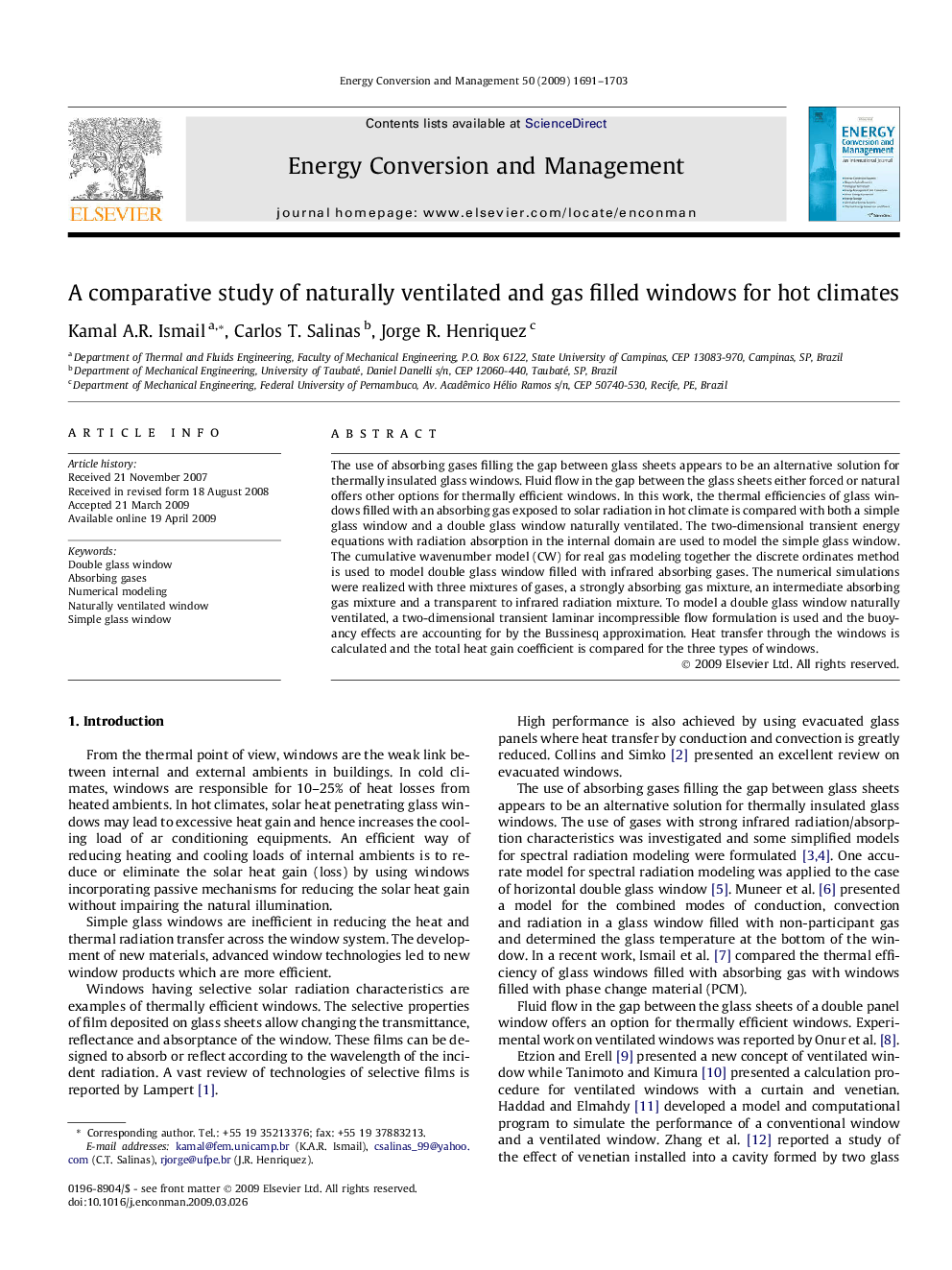| Article ID | Journal | Published Year | Pages | File Type |
|---|---|---|---|---|
| 761796 | Energy Conversion and Management | 2009 | 13 Pages |
The use of absorbing gases filling the gap between glass sheets appears to be an alternative solution for thermally insulated glass windows. Fluid flow in the gap between the glass sheets either forced or natural offers other options for thermally efficient windows. In this work, the thermal efficiencies of glass windows filled with an absorbing gas exposed to solar radiation in hot climate is compared with both a simple glass window and a double glass window naturally ventilated. The two-dimensional transient energy equations with radiation absorption in the internal domain are used to model the simple glass window. The cumulative wavenumber model (CW) for real gas modeling together the discrete ordinates method is used to model double glass window filled with infrared absorbing gases. The numerical simulations were realized with three mixtures of gases, a strongly absorbing gas mixture, an intermediate absorbing gas mixture and a transparent to infrared radiation mixture. To model a double glass window naturally ventilated, a two-dimensional transient laminar incompressible flow formulation is used and the buoyancy effects are accounting for by the Bussinesq approximation. Heat transfer through the windows is calculated and the total heat gain coefficient is compared for the three types of windows.
